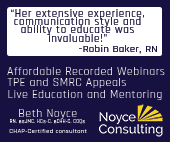An exerpt of “How AI is Enhancing Healthcare Communication” by Sandeep Shah, Founder and CEO, Skyscape
Edited by Kristin Rowan
How AI is Enhancing Communication
Artificial intelligence isn’t a new concept. In the healthcare industry alone, AI has been used to some degree since the 1970’s. It was first implemented to help identify blood infection treatments and showed promising results. This led to further curiosity about what it could do for healthcare professionals.
Today, AI is commonly used in several aspects of care, especially regarding radiology, screening tests, psychiatry, disease diagnosis, and predictive and preventative care. However, one lesser-known way AI tools are impacting our industry is through enhanced communication. AI is reshaping how care at home professionals interact with patients and care teams.
Challenges in Medical Communication
Electronic Health records have reduced the incidence of medical errors by improving the accuracy and clarity of medical records. However, they do not address the communication challenges today’s healthcare organizations still face. Communication channels, especially in care at home, are often fragmented, leaving gaps in patient care, follow-up, and department collaboration. Moreover, patient engagement is increasingly tricky without good communication, resulting in disruptive care plans or gaps in their treatment.
Effective communication is paramount to enhancing patient outcomes, revenue growth, and operational efficiency. Thanks to advancements in technology, AI has the potential to bridge these gaps and create a better experience for both healthcare providers and the patients they care for.

AI Communication Improving Patient Care
Communication within a HH agency is becoming increasingly complex. With more patients and a shortage of nurses, your team may be overwhelmed with tasks, applications, and health information. Luckily, there are several ways that you and your team can leverage artificial intelligence to better communication with patients and care teams (physicians, nurses, surgeons, lab technicians, administrative staff, etc.)
Here are some AI applications that will have the most impact on your agency:
Scheduling and Follow-ups
AI can improve both scheduling and follow-up processes, where there are often delays and miscommunications. AI software can automate appointment reminders and confirmations as well as rescheduling appointments if needed. These automated systems increase patient engagment with your agency and in their treatment. Some AI platforms can analyze patient data to give you a better look at patients who may have additional needs, which could also increase your billings.
Real-Time Support
Care at home nurses and caregivers report burnout due to increased requirements and tasks, including patient communication. AI should not replace your caregivers, but it can be helpful for simple questions, appointment reminders, and other routine tasks.
Future uses may include assistance with medical questions and creating a plan of care. AI is becoming more powerful in learning predetermined information, including scientifically reviewed medical information. Having real-time access to evidence-based, clinical information can accelerate care decisions at the point-of-care.
Less Paperwork, Less Burnout
Care at home nurses and caregivers can spend hours per day on documentation and patient communication. AI cannot and should not completely replace human interaction and communication, but it can significantly reduce the administrative burden of your employees.
Documentation, care notes, intake, and patient emails consume a significant portion of the day. A study from the University of California San Diego School of Medicine found that AI-generated emails and replies significantly reduce the mental strain on medical professionals. The study focused on communication between doctors and patients, but suggests that is can ease the workload of nurses and other healthcare professionals.
Efficient Workflows
Streamlining workflows seems to be one of the most promising applications of AI. Generative AI can interpret the information it is given to create something new. For care at home, this means the eventual use of AI for OASIS coding, plan-of-care, NTUC documentation, and more.
Removing Language and Cultural Barriers
Language translation creates the possibility for any of your caregivers to care for any patient, regardless of the language they speak. AI translators bridge gaps in communication, especially when it comes to care plans and symptoms that are not generally part of the vocabulary taught when learning a language.
AI can also adjust communication for certain cultural backgrounds, improving patient trust and satisfaction, which can impact your star rating.
Care Collaboration
Using digital secure platforms, you can create communication channels with patients, family members, family caregivers, doctors, specialists, lab technicians, and anyone else involved in patient care. Instant updates to all the members of a patient’s care team relays critical information when it’s needed most.
Save Time and Money
Not only do these AI applications improve patient satisfaction and reduce the workload for your nurses, AI can save you money. By automating operations like scheduling, shift fulfillment, billing, and other routine, repetitive tasks, your agency can scale without adding additional administrative personnel. With minimal profit margins, automation can help ensure your agency can continuing putting effort where it matters most, into patient care.
The Platform Matters
AI sounds great, and the applications for improving efficiency, better patient satisfaction, better employee satisfaction, and lower costs are appealing to care at home agency owners. However, spending your time, effort, and money on the wrong AI platform can be worse than doing nothing at all.
AI platforms should enhance, not replace, any task it is designed to perform. If an AI platform promises to handle 100% of any task, run, don’t walk, in any direction.
With so many AI applications available, you could onboard dozens of platforms and still have room for more automation. Look for AI applications that perform multiple tasks and/or integrate with other AI software companies.
When you’re ready to let AI simplify your agency and make your staff and patients happier, it may be a good idea to find a consultant who is an expert in software and AI applications to recommend the right fit for your agency.
# # #
About Buzz
Buzz is a HIPAA-secure platform that simplifies real-time on-the-go communications between all stakeholders in an organization’s healthcare ecosystem (administrators, operations, billing, payors, providers and patients). It supports commonly used communication modalities, including texts, dictation, private calls, audio, images, reports, and video sharing. By consolidating these features into a single platform, Buzz eliminates the need for multiple communication tools, reducing confusion and burnout and enabling healthcare teams to focus on delivering exceptional patient care.


Sandeep Shah is a pioneering technology entrepreneur, educator, and innovator, combining vision with strong technical expertise to transform healthcare delivery. Track record delivering innovative technologies to Harvard’s hospital network, and developing the first, truly usable mHealth application. Technical interests in telehealth, Clinical Communication and Collaboration (CC&C), and business leadership. Educational background in electrical engineering (B.Tech) and computer science (M.Tech), both from the Indian Institute of Technology, Bombay.
©2025 by The Rowan Report, Peoria, AZ. All rights reserved. This article originally appeared in The Rowan Report. One copy may be printed for personal use: further reproduction by permission only. editor@therowanreport.com



